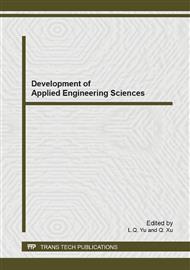p.187
p.193
p.197
p.201
p.205
p.208
p.212
p.216
p.221
Research on Solving the Watertightness Problem of Underwater Angular Sensor Driven by New Magnetism
Abstract:
The angular sensor is frequently used to measure relative angle changes between two structural components, from the perspective of working principles, it can be divided into "angular displacement" and "linear displacement" angular sensor. In the application under water, the watertightness of traditional angular sensor can not meet the requirements, and the sensor is easy to corrode in the sea water, causing damage to the sensor. The outer shell of new underwater angular sensor is made of 304 stainless steel, by making use of the exclusion principle of magnet and the synchronous changes of magnetic axis driven by magnetism, the angle transducer in the body can measure the relative angle changes between two structural components under water.
Info:
Periodical:
Pages:
205-207
Citation:
Online since:
October 2014
Authors:
Keywords:
Price:
Сopyright:
© 2014 Trans Tech Publications Ltd. All Rights Reserved
Share:
Citation:


